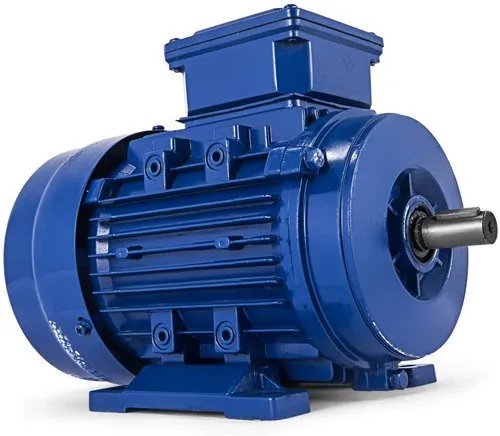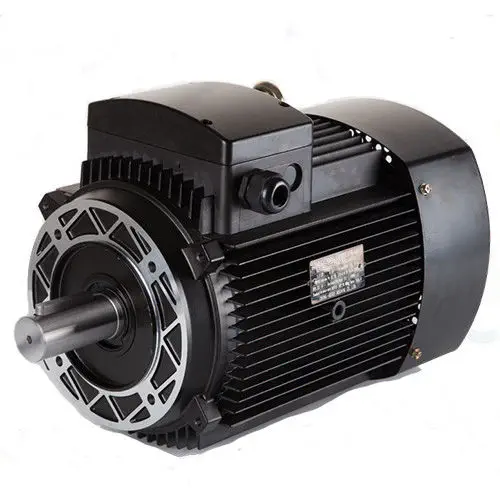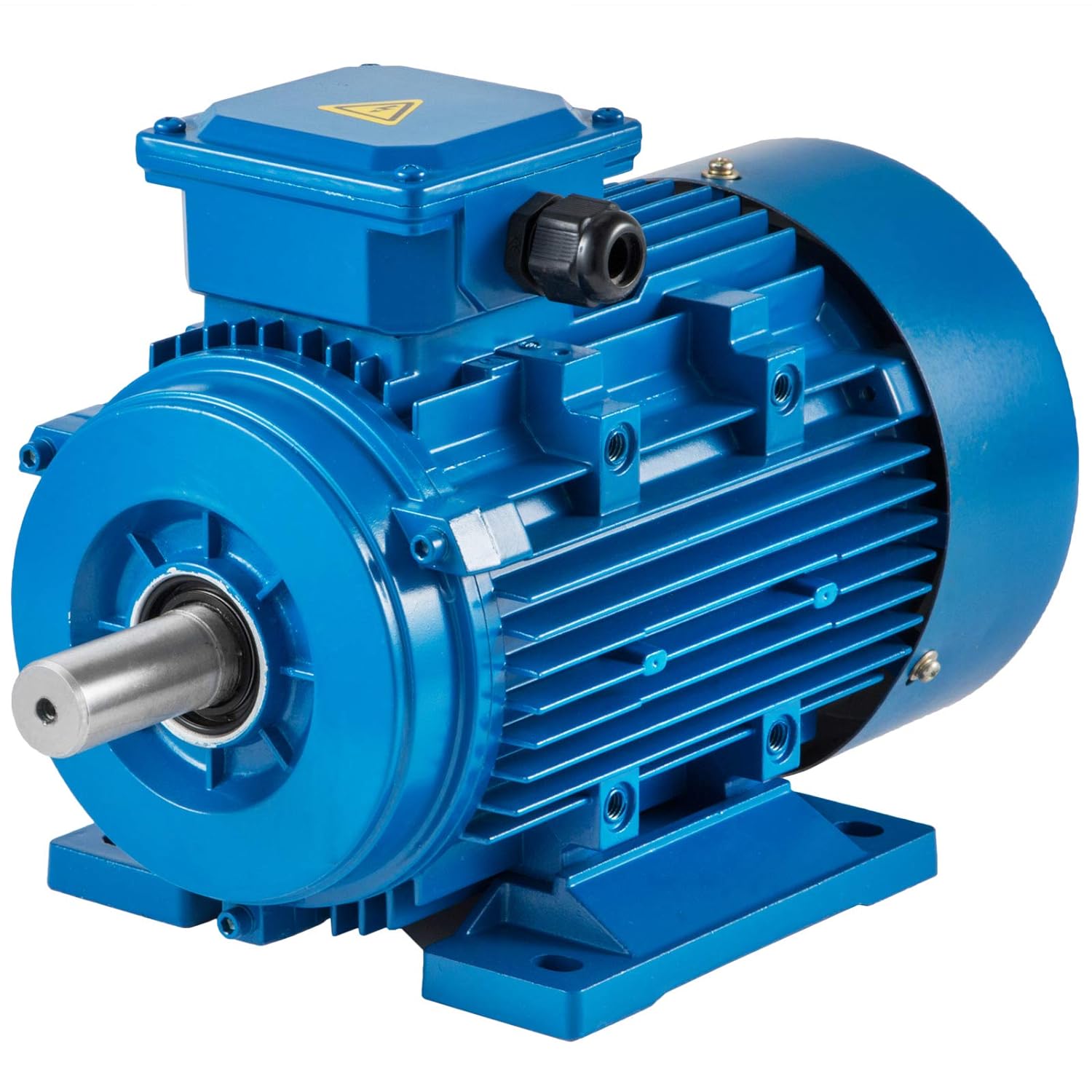Product Description
YC series motor is a kind of heavy-duty single-phase induction electric motor with the feature of totally enclosed fan cooled (TEFC). The mounting dimension is fully comformed with IEC standard. This type features of easy maintenance, reliable operation, low temperature rise, low noise, small starting current and large starting torque. YC series is ideal for small workshops and water pump and is the best choice for house using with 220VAC power supply.
– Powerful Ac motor: The compact and small-sized AC motors feature output 5.5 HP, steel frame and single phase.
– High Efficiency: The electric motor can run at the maximum speed 2880 RPM, high working efficiency. 220V/50Hz input volts, 1.1″ (28mm) shaft diameter, 2.36″ (60mm) shaft length. The upper hardness shaft is more durable.
– Steel Frame: The compressor duty motor is made of high quality steel material. The firm and CHINAMFG material can protect the engine well. Class F insulation.
– Super Quiet: Quiet series design at only 78 dB noise level for operator. Very ideal for the home workbench and outdoor use.
– High Speed Cooling Fan: Big fan at 1 end cools the motor in hours’ running, even in dusty or damp environments, reducing energy costs or overheads, increasing winding lifetimes.
– Heavy-duty oversized ball bearings. High tensile strength steel shaft. Large all-metal capacitor cover and large easy-to-wire junction box.
Technical Data
| Type | Power (Kw) |
Speed (r/min) |
Current (A) |
Voltage (V) |
Efficiency | Power Factor |
Noise Level |
Tst |
Overall Dimension (inch) |
| YC112M2-2 | 4 | 2880 | 24.8 | 220/230 | 79% | 0.86 | 78 | 2.2 | 17.9×9.65×11.8 |
Workshops
| Application: | Machine Tool |
|---|---|
| Speed: | 2880 Rpm |
| Number of Stator: | Single-Phase |
| Casing Protection: | Closed Type |
| Number of Poles: | 2 |
| Starting Mode: | Capacitor |
| Samples: |
US$ 103.99/PC
1 PC(Min.Order) | |
|---|
| Customization: |
Available
|
|
|---|
What are the key components of a typical 3-phase motor?
A typical 3-phase motor consists of several key components that work together to convert electrical energy into mechanical energy. Here’s a detailed explanation of the key components of a typical 3-phase motor:
- Stator: The stator is the stationary part of the motor and contains the core, windings, and other structural components. It consists of a laminated iron core with slots where the motor windings are placed. The stator windings are connected to the power supply and create a rotating magnetic field when energized.
- Rotor: The rotor is the rotating part of the motor and is located inside the stator. It consists of a laminated iron core with conductive bars or coils embedded in it. The rotor is designed to rotate within the magnetic field generated by the stator windings. The interaction between the stator’s rotating magnetic field and the rotor’s conductive elements induces currents in the rotor, creating a torque that drives the rotation of the motor.
- Windings: The windings are conductive coils of wire that are wound around the stator slots. In a 3-phase motor, there are typically three sets of windings, each spaced 120 degrees apart. These windings are designed to carry the three-phase alternating current (AC) from the power supply. The arrangement and connection of the windings create a rotating magnetic field in the motor, which interacts with the rotor to produce torque and rotation.
- Power Supply Connections: The motor has terminals or leads for connecting it to the three-phase power supply. The power supply connections are typically labeled as L1, L2, and L3, corresponding to the three phases of the power supply. These connections provide the alternating current required to energize the stator windings and create the rotating magnetic field.
- Bearings: Bearings are used to support the rotor and allow it to rotate smoothly within the stator. The motor typically has two bearings, one at each end of the rotor shaft. These bearings reduce friction and enable the efficient transfer of rotational motion from the rotor to the motor’s load.
- Shaft: The shaft is a cylindrical component that extends from the rotor and serves as the mechanical link between the motor and the load. The shaft transfers the rotational motion generated by the motor to the connected equipment or machinery.
- Housing or Frame: The motor is enclosed in a housing or frame that provides protection and support for the internal components. The housing is typically made of a durable material such as metal or plastic and is designed to withstand the operating conditions of the motor.
- Cooling System: Many 3-phase motors incorporate a cooling system to dissipate heat generated during operation. This may include cooling fins on the motor housing, fan blades attached to the rotor shaft, or a separate cooling fan. Efficient cooling is essential to maintain optimal motor performance and prevent overheating.
These are the key components of a typical 3-phase motor. Each component plays a crucial role in the motor’s operation, from generating the rotating magnetic field to transferring mechanical energy to the load. Understanding these components is essential for troubleshooting, maintenance, and proper operation of 3-phase motors.
How do 3-phase motors contribute to the efficiency of industrial processes?
3-phase motors play a significant role in enhancing the efficiency of industrial processes. Here’s a detailed explanation of how these motors contribute to improved efficiency:
- Power-to-Weight Ratio: 3-phase motors offer a high power-to-weight ratio, making them compact and lightweight compared to other motor types. This characteristic allows for more efficient use of space and facilitates easier installation and transportation in industrial settings.
- High Torque Output: 3-phase motors are known for their high torque output, enabling them to efficiently drive heavy loads and handle demanding industrial applications. The high torque capability ensures that motors can start and accelerate loads quickly and effectively, minimizing time and energy wastage.
- Efficient Power Conversion: 3-phase motors convert electrical power into mechanical power with high efficiency. Compared to single-phase motors, 3-phase motors experience less power loss, deliver smoother operation, and have higher power factor values. This efficient power conversion contributes to energy savings and reduces operating costs.
- Variable Speed Control: Many 3-phase motors are equipped with variable frequency drives (VFDs) or adjustable speed drives (ASDs). These devices allow for precise control of motor speed and torque, enabling optimal matching of motor output to the requirements of the industrial process. By adjusting the motor speed to match the load, energy consumption can be minimized, resulting in improved efficiency.
- Multiple Starters and Reversibility: 3-phase motors support multiple starters, allowing for convenient control of motor operation and integration into complex industrial systems. Additionally, these motors can easily be reversed, enabling bi-directional operation. This flexibility enhances process efficiency by accommodating different operational modes and facilitating seamless integration into various applications.
- Reliability and Durability: 3-phase motors are known for their robust construction and high reliability. They are designed to withstand the demanding conditions of industrial environments, including high temperatures, vibrations, and varying loads. The reliability and durability of these motors contribute to uninterrupted operation, reduced downtime, and improved overall process efficiency.
- Compatibility with Automation: 3-phase motors are well-suited for integration into automated industrial systems. They can easily be controlled and monitored through programmable logic controllers (PLCs) or other automation technologies. This compatibility with automation enables precise coordination of motor operation with other process variables, optimizing efficiency and productivity.
- Wide Range of Applications: 3-phase motors find application in a wide range of industrial processes, including pumps, compressors, conveyors, fans, mixers, and more. Their versatility and adaptability make them suitable for various industries, from manufacturing and production to mining, oil and gas, and HVAC systems. By providing reliable and efficient power to drive these processes, 3-phase motors contribute to improved overall industrial efficiency.
Overall, 3-phase motors offer numerous advantages that enhance the efficiency of industrial processes. Their compact design, high torque output, efficient power conversion, variable speed control, and compatibility with automation technologies make them a preferred choice for a wide range of industrial applications. By utilizing 3-phase motors, industrial processes can achieve higher energy efficiency, improved productivity, and overall cost savings.
What role do 3-phase motors play in the efficiency of HVAC systems?
3-phase motors play a crucial role in enhancing the efficiency of HVAC (Heating, Ventilation, and Air Conditioning) systems. Here’s a detailed explanation of their contribution:
- Air Handling Units (AHUs):
- 3-phase motors are commonly used in HVAC systems to power the fans in air handling units (AHUs). These fans circulate and distribute conditioned air throughout the building.
- The use of 3-phase motors in AHUs allows for efficient and reliable operation. They can deliver the necessary airflow at varying static pressures, ensuring optimal air distribution and ventilation in different zones of the building.
- Chillers and Cooling Towers:
- In large-scale HVAC systems, 3-phase motors are utilized in chillers and cooling towers. These components are responsible for cooling the water used in the HVAC system.
- Efficient 3-phase motors drive the compressors and fans in chillers and cooling towers, enabling effective heat transfer and temperature control. This results in improved energy efficiency and cooling performance of the HVAC system.
- Variable Air Volume (VAV) Systems:
- 3-phase motors are often employed in Variable Air Volume (VAV) systems, which allow for individual control of airflow in different zones or rooms of a building.
- By using 3-phase motors in VAV systems, the air volume can be easily adjusted to meet the specific cooling or heating demands of each zone. This enables precise temperature control, reduces energy wastage, and enhances overall HVAC system efficiency.
- Energy-Saving Measures:
- 3-phase motors in HVAC systems can be integrated with energy-saving measures to improve efficiency. For example, they can be paired with variable frequency drives (VFDs), which allow for the modulation of motor speed and power consumption based on actual needs.
- VFDs control the speed of 3-phase motors, ensuring that they operate at optimal speeds for different load conditions. This results in significant energy savings, as motors consume less power when operating at lower speeds.
- Reliability and Durability:
- HVAC systems require reliable and durable components to ensure continuous operation. 3-phase motors are known for their robust construction and ability to withstand the demanding conditions typically found in HVAC applications.
- The reliability of 3-phase motors minimizes the risk of motor failures and unexpected downtime, allowing HVAC systems to operate efficiently and maintain occupant comfort.
Overall, 3-phase motors play a critical role in enhancing the efficiency of HVAC systems. They power the fans, compressors, and pumps, enabling effective air distribution, temperature control, and heat transfer. Their integration with energy-saving measures further optimizes energy consumption, resulting in improved overall HVAC system efficiency and reduced operating costs.
editor by CX 2023-10-23




